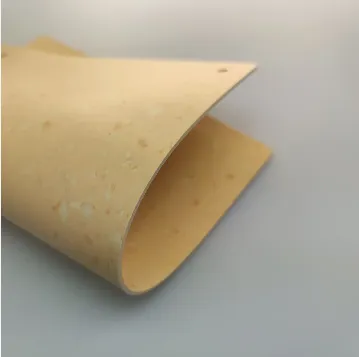
- Afrikaans
- Albanian
- Amharic
- Arabic
- Armenian
- Azerbaijani
- Basque
- Belarusian
- Bengali
- Bosnian
- Bulgarian
- Catalan
- Cebuano
- Corsican
- Croatian
- Czech
- Danish
- Dutch
- English
- Esperanto
- Estonian
- Finnish
- French
- Frisian
- Galician
- Georgian
- German
- Greek
- Gujarati
- Haitian Creole
- hausa
- hawaiian
- Hebrew
- Hindi
- Miao
- Hungarian
- Icelandic
- igbo
- Indonesian
- irish
- Italian
- Japanese
- Javanese
- Kannada
- kazakh
- Khmer
- Rwandese
- Korean
- Kurdish
- Kyrgyz
- Lao
- Latin
- Latvian
- Lithuanian
- Luxembourgish
- Macedonian
- Malgashi
- Malay
- Malayalam
- Maltese
- Maori
- Marathi
- Mongolian
- Myanmar
- Nepali
- Norwegian
- Norwegian
- Occitan
- Pashto
- Persian
- Polish
- Portuguese
- Punjabi
- Romanian
- Russian
- Samoan
- Scottish Gaelic
- Serbian
- Sesotho
- Shona
- Sindhi
- Sinhala
- Slovak
- Slovenian
- Somali
- Spanish
- Sundanese
- Swahili
- Swedish
- Tagalog
- Tajik
- Tamil
- Tatar
- Telugu
- Thai
- Turkish
- Turkmen
- Ukrainian
- Urdu
- Uighur
- Uzbek
- Vietnamese
- Welsh
- Bantu
- Yiddish
- Yoruba
- Zulu
Homogeneous Vinyl and Heterogeneous Viny: Which Flooring Solution Suits Your Needs?
Selecting the right flooring material is crucial for spaces with high traffic, strict hygiene requirements, or aesthetic considerations. Both homogeneous vinyl and heterogeneous viny stand out as versatile and reliable options, offering unique benefits tailored to various environments. This article delves into their suitability for high-flow areas, maintenance requirements, ease of installation, and more, helping you make an informed decision.

Heterogeneous Viny and Homogeneous Vinyl: Which Is More Suitable for High-Flow Areas?
When it comes to high-flow areas, durability and resistance to wear are paramount. Homogeneous vinyl floor is crafted from a single, solid layer, ensuring uniform performance even in the face of intense foot traffic. This durability makes it an excellent choice for hospitals, schools, and industrial facilities where flooring must withstand daily wear and tear without compromising appearance. Its seamless surface minimizes dirt accumulation, further enhancing its suitability for such demanding environments.
Heterogeneous viny, on the other hand, features a multi-layered structure that includes a protective wear layer, a decorative layer, and a backing. While its wear layer provides commendable durability, the layered design may make it less robust in extremely high-traffic areas compared to homogeneous vinyl. However, heterogeneous viny excels in spaces where style and design variety are key, such as retail stores or residential settings.
How to Maintain Heterogeneous Viny and Homogeneous Vinyl?
Proper maintenance ensures that both homogeneous vinyl and heterogeneous viny retain their performance and appearance over time. For homogeneous vinyl floor, maintenance is straightforward due to its non-porous surface. Regular sweeping and mopping with a mild cleaner are sufficient to remove dirt and stains. Periodic polishing can help maintain its glossy finish, especially in high-traffic areas.
Maintaining heterogeneous viny involves a similar routine, but additional care may be required to protect its decorative layer. Avoid abrasive cleaners that could damage the surface, and consider using a protective mat in entryways to reduce wear. Both flooring types benefit from promptly addressing spills to prevent staining, ensuring a clean and hygienic surface.
Heterogeneous Viny and Homogeneous Vinyl: How Difficult Are They to Install?
Installation complexity varies depending on the flooring material and the specific environment. Homogeneous vinyl is relatively easy to install, especially in large, open spaces. Its sheets can be seamlessly welded together, creating a uniform surface ideal for healthcare or industrial settings. Professional installation is recommended to ensure proper adhesion and minimize seams, which could compromise hygiene.
Heterogeneous viny installation involves laying multiple layers, which can add complexity. While the process is still manageable for professionals, achieving a seamless finish in intricate spaces may require additional time and expertise. The decorative layer must be handled with care to avoid damage during installation. Despite these challenges, the wide range of designs and textures makes heterogeneous viny a preferred choice for spaces where aesthetics play a significant role.
Heterogeneous Viny and Homogeneous Vinyl:Which Flooring Material Offers Better Design Versatility?
While both flooring options provide excellent functionality, heterogeneous viny takes the lead in design versatility. Its decorative layer can mimic natural materials like wood or stone, offering endless possibilities for creating visually appealing interiors. This makes it ideal for residential and commercial spaces where style and ambiance are priorities.
In contrast, homogeneous vinyl focuses on durability and performance rather than design. Its simpler, uniform appearance is better suited for functional spaces like laboratories or operating rooms. However, recent advancements have introduced more color options, allowing homogeneous vinyl floor to cater to a broader range of applications without compromising its core strengths.
Why Choose Homogeneous Vinyl or Heterogeneous Viny?
Both homogeneous vinyl and heterogeneous viny are exceptional flooring solutions, each catering to specific needs. Homogeneous vinyl floor excels in high-traffic, high-hygiene environments, offering unmatched durability and ease of maintenance. Its seamless design and low maintenance costs make it a long-term investment for demanding spaces.
On the other hand, heterogeneous viny provides the perfect blend of functionality and aesthetics, making it suitable for spaces where style
-
Masking Tape: Clean Removal, Precision Lines, Pro-GradeNov.10,2025
-
Skirting: MDF, Oak & SPC | Durable, Easy-FitNov.10,2025
-
Commercial VCT Tile Flooring – Durable, Low-MaintenanceNov.10,2025
-
LVT Vinyl Floors – Waterproof, Scratch‑Resistant, Easy ClickNov.10,2025
-
Masking Tape - Pro-Grade, Clean Removal, Crisp LinesNov.10,2025
-
Premium Masking Tape - Sharp Lines, Clean RemovalNov.10,2025



